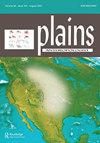Natural disasters and interregional interactions: La Longue Durée in Northern Plains historical developments
Q2 Social Sciences
引用次数: 3
Abstract
Some 6730 radiocarbon years ago, the Plinian eruption of Mount Mazama prompted dispersed bison hunting groups to temporarily abandon their traditional homelands and seek refuge among their distant relatives in the east. During their stay, they established new social ties and learned new technologies such as stone boiling. Returning to their homeland, they adapted this technology to extract bone grease and produce pemmican. This reliable, storable, portable, and nutritious foodstuff provided security for the Northern Plains groups and gave them a valuable trade good to exchange with their eastern neighbors. This natural disaster thus initiated a series of practices to maintain and expand their social safety net through interregional interactions with groups over a very long time. From the exchange of goods and information to the development of extensive trade centers, the bison hunters and their neighbors established an ever-expanding trade network where regional economic, social, ritual and historical practices evolved in tandem with local developments.自然灾害和区域间互动:北部平原的La Longue Durée历史发展
大约6730年前,普林尼火山爆发的马扎马火山促使分散的野牛狩猎团体暂时放弃传统家园,向东部的远亲寻求庇护。在逗留期间,他们建立了新的社会关系,学习了煮石头等新技术。回到祖国后,他们利用这项技术提取骨脂并生产pemmican。这种可靠、可储存、可携带、营养丰富的食品为北方平原群体提供了安全保障,并为他们与东部邻国交换了宝贵的贸易利益。因此,这场自然灾害在很长一段时间内通过与群体的区域间互动,启动了一系列维护和扩大其社会安全网的做法。从货物和信息的交换到广泛贸易中心的发展,野牛猎人和他们的邻居建立了一个不断扩大的贸易网络,区域经济、社会、仪式和历史实践随着当地的发展而演变。
本文章由计算机程序翻译,如有差异,请以英文原文为准。
求助全文
约1分钟内获得全文
求助全文

 求助内容:
求助内容: 应助结果提醒方式:
应助结果提醒方式:


